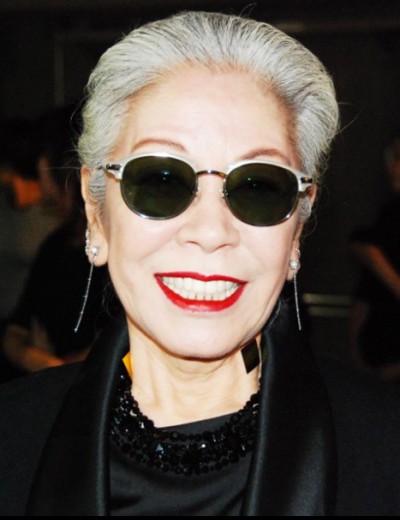
Yuki Torii
About
Yuki was born in Tokyo, Japan, on 3 January 1943. As a child, Yuki Torii had ambitions of becoming a painter.
Torii was the youngest student to have enrolled at the Bunka Gakuin College of Art in Tokyo when she was 15. This precocious talent led her to sell her first creations in her grandmother's haute couture boutique Ginza in Tokyo. By 1972 she had established her own ready-to-wear business, Torii Co. Ltd., and by 1975 had shown her first collection in the prestigious Paris ready-to-wear collections.
In 1983, two new brands were created, Yuki Torii Deux and Yuki Torii International. Licensed products like scarves, furs, gloves, belts, eyewear, neckties, and umbrellas were produced from the Yuki Torii Design Studio established in 1984. By the following year, the company was operating from both Japan and France when Yuki Torii France S.A. was established, together with the opening of the boutique at 38-40 Galerie Vivienne in Paris.
The Look
Pattern and color had always excited her, and when she became a professional designer in the early 1960s, her approach always began with the textile or color, with a defined choice of palette that ranged from pastels to brights. These bold, vivid colors have been an enduring and recognizable quality in Torii's work. One distinctive collection was autumn/winter 1986, which mixed rigorously colored tartans and checks for menswear, womenswear, and childrenswear. The collection consisted of lively, wearable separates; oversize tartan shirts, tartan trousers, and comfortable cardigans for men; long tartan flounced skirts for women, teamed with long, skinny rib jumpers or oversized Argyle patterned sweaters; tartan pinafore dresses for girls and a weather-beaten, mountaineering look for boys, layering tartan over shirts over tartan Levi-style jackets. The vibrant Yuki Torii collection sold as part of Liberty of London's Japan at Liberty promotion in 1991 and displayed a more sophisticated air, paying homage to the style of Coco Chanel combined with the color combinations of Christian Lacroix. Vibrant tweeds in unities of orange, lime green, red, grass green, yellow, pale pink, and fuchsia were made into neat, boxy suits, and separates. Much of the fabric was fringed at the hems of garments, and flower-shaped tweed emblems were interesting details appliquéd on pockets and trims. Torii has often been told her clothes look best on herself, and it is from this perspective that she begins designing. The approach is similar to that adopted by many other female designers, in particular Jean Muir, who is renowned for producing clothes women really want to wear and feel comfortable in. Torii thinks it natural that female designers conceive ideas from themselves and their roles and needs as women. She likes to project an overall image of sweetness in her clothes, a sweetness retained in images of childrenswear but is often lost in adult fashion. She achieves this by never presenting themes that threaten or provoke controversy. Her look instead is a harmonious combination of contrasting color and fabric that is wearable and flattering but often incorporates the unusual detailing found in children's clothes, for instance, Western cowboy detailing on children's shirts or the naive flower emblems in her tweed collection. A continuing theme in Torii's work has been the kimono. Kimonos and obis have been included in her lines and influenced items in her collections for decades. Typically, she bases these designs on the traditional kimono, which is a complicated and rule-governed garment, but adds a flexibility that allows today's women to adapt them to their lifestyle. She also incorporates modern fabrics, such as polyester, which does not wrinkle. Torii's haute couture and ready-to-wear similarly feature unique mixes of fabrics and patterns, such as checks with velvet or leather with gold lamé. Her collections are often critically acclaimed, with the term "classy" frequently used. The fashion press and customers alike find them innovative yet wearable. In addition to her collections, Torii designs school uniforms, as well as licensed accessories.